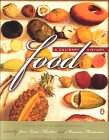|
A Fish-Eye Perspective on Food
FOOD: A Culinary History from Antiquity to the Present
Lest anyone doubt the elegance of this truth, a nibble at the rich banquet of knowledge thrown by noted food historians and editors Jean-Louis Flandrin and Massimo Montanari in FOOD: A Culinary History from Antiquity to the Present will prove confirming. Here, for example, a convincing case is made that it was in search of spices as much as gold and silver that Europeans conquered the seven seas and other continents, and this changed the course of world development. Once past the unsurprising fact that foremost among the several reasons for the importance of the spice trade was greed -- it made rich kings personally richer (the English Crown, for instance, reserved for itself a monopoly on spices, flavorings, and dysestuffs) and bankrupt ones solvent--the authors serve up an unexpected if zesty feast of myth-debunking facts. Spices were not in high demand as a means to preserve food or hide foul and rancid taste. The substances used in the preservation of meat and fish were mainly salt, vinegar, and oil -- all of which were widely available since pre-history. In fact, during the period of the great spice trade meat was routinely consumed sooner after slaughter than it is today. If there was a problem worthy of criticism of medieval meat it was that it was insufficiently aged rather than rotten. As for the west learning about spices from Arabs, whose civilization Europeans came to admire during the Crusades, this, too, is proved a blivet. Spices were used well before the 10th to 13th centuries, and even before the Arab empire existed, that is, before the 7th and 8th centuries. Eighty percent of the recipes in Roman culinary treatises employed pepper. So what was the engine driving the spice trade? Spices were yesteryear's health food. They made ingredients more appetizing and, at the same time, according to then-accepted dietetics, more digestible. Magninus of Milan explains in his Regimen Sanitatis, that “ ... seasoning food is of no small value in a healthy diet because [it] makes food more delectable to the taste and therefore more digestible. For what is more delectable is better for digestion. Condiments add nutritional value and correct for harmful properties.” In other words, the taste for spices, hence conquest of the world, was shaped largely by dietetic beliefs. Through the work of forty or so writers and scholars, FOOD covers western civilization at table from the dawn of history to the McDonaldization of the world The editors' fish-eye perspective is, in its way, analogous to the musical conceit of Frederic Chopin. In his piano works, whose melodies and ornaments glisten revealingly, the hands are often widely separated on the keyboard. Breadth of focus produces a harmonic transparency that shines through the curtains of obscurity to reveal -- if only for moments now and again -- the relationship of everything to everything else. Here is a massive (592pp) but tasty cornucopia of authoritative information, research, thought, and insight. Its clear and accessible prose makes it unlikely that readers will ever again be able to pick up a fork or tear a piece of bread from a loaf without thinking that behind each of these actions there lies a long and fascinating thread of human existence and experience. Take the taste for old wine as a case in point. We think of the practice of ageing wine as having begun in the 18th century with Ch. Lafitte, the development of the glass bottle that could be laid on its side, and the use of corks for closures. In fact, the authors prove that wine ageing pre-dates Dom Perignon et. al. by some 2,000 years. High-alcohol wines were fermented slowly by Greeks of the Classical world, well-sealed in glazed amphoras to assure quality maturation. As a result, for eons old wine was preferred to new. The widespread replacement of amphoras with barrels, around 300 CE, changed the conditions of aging. By Medieval times, young wine was preferred over old, probably because few vintages could withstand the inevitable oxidation occurring in barrels. As for wine with food, yes, from time immemorial ... but which with what? The first published recommendation for specific wines suited to certain dishes was authored in the 15th century by Rumpolt, a German, fully 300 years before the French heard the echo and claimed the patent. If this important book affords us a singular message among the many it proffers, it is likely this: Traditions in food are not fixed once and for all time at the moment of their inception. No, they are created, shaped, and defined over time as cultures interact, clash, and influence and absorb one another. At the inception of the Middle Ages, Roman eating habits were changed by contact with barbarian customs. Not only did Roman consumption patterns change but so did Roman taste. The same thing happened when Europeans discovered New World plants and animals. It is from events and evolutions like these that food identities are developed, confirmed, and reshaped. What remains now is for us to learn to manage the relationship between the past and the present, tradition and change. March 2001
|
 Food drives history, politics, and economics.
Food drives history, politics, and economics.